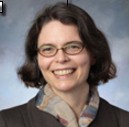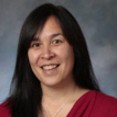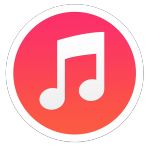
AES Program Director Melanie Gangle
When we accessibility is discussed in the world of Higher Ed, it’s usually within the context of making course content and classroom spaces usable for students with disabilities. But there is a much broader definition of accessibility that affects all learners. What if Universal Design was the standard? What if course content and learning spaces were designed from the beginning to include all learners? That’s a very high standard, but one worth working towards.
In this podcast, Melanie Gangle and Christa Hill from Accessible Education Services, discuss the wide range of tools and techniques available for making the learning environment more accessible for all students. From captioning for video to simple strategies like ensuring that faculty are facing the class when speaking and even when notating while using an ELMO or a tablet. Current AES training available for faculty covers many technologies, pedagogical strategies, and techniques including how to continually face the classroom while teaching and explains why this is especially important for students with hearing impairments, but also important for students who need to see a professor’s face to pay attention.
Listen:
%CODE79%
Complete transcript available in MS Word format
From Our Conversation:
Christa: I interact with students everyday in establishing and getting their accommodation started. It’s putting them in motion, keeping them going from semester to semester. My takeaway really is that small, effective changes happen when I am aware and I recognize: Can I do this differently? How is someone else interacting with this or responding to me? Things like, when we talked about captioning of videos, if you were to turn the sound off, if your speakers don’t work on your computer, you can’t participate in what’s going on in the video, so why captioning is important not just for those who may be hard-of-hearing but for those who struggle to learn audibly or maybe don’t have speakers. It’s things like that, to look in my everyday life, and I think those are great takeaways.
Another one for me was we’re not changing everything all at once. It doesn’t work that way. It’s probably not going to happen that way, and it’s way more overwhelming to think of it that way. It’s just one small thing, to recognize one thing and attempt to change it, seek out help from other people. Those were takeaways for me.
Melanie: Yeah, absolutely. I would also add that, as you had mentioned, Sam, many of the things that we are talking about, strategies, technologies available, use of certain pedagogical strategies, are certainly specific in terms of need for one student, say with a disability, in the classroom, but more and more it’s really important that all of us, and certainly the students, most importantly, that we’re teaching, are learning these strategies. These are necessary in the business environment, certainly in government. You won’t see any television programs, for example, without captions available. It’s required by law. Certainly, students going into the communication realm need to know how to use captioning. That’s just a small example.
The more that we can all learn about these opportunities for increasing the accessibility of the learning environment, the benefit is absolutely to perhaps the one or handful of students in the classroom with a specific immediate need, but the benefit also is for all of us and for all of the students that we’re teaching. It’s wonderful to have the leadership and guidance of the AES advisory committee really asking AES to make these opportunities more available to faculty. We want to provide these training opportunities for all faculty.
It’s often most effective when we’re talking about a specific student and we’re talking about a specific class, because that is just more hands-on in terms of looking at
applicability, but we certainly invite faculty to contact AES, as well as ATS, if you are wanting to look at a particular course and how you might be making it more accessible. We’re very glad to do that, and the advisory committee has also asked us to do that. You can also talk with your associate dean as well if you have ideas or questions, and your associate dean certainly can provide leadership and guidance around this as well.
Maria: It sounds to me like what I hear both of you saying is we’re really moving towards a universally accessible classroom, accessible to all learners with all styles. As Sam was pointing out to me, students don’t always ask if they need a specific accommodation or they need to have something presented in a certain way. A lot of times you’re not even aware that you as a learner may need to have something presented in a different way. I love this idea that we’re moving towards this classroom that’s just going to be so much more accessible to everyone here.
Melanie: Absolutely. You make a great point, Maria, that the student may not always ask. I think we like to think that a student will always be a good self-advocate. We in AES talk about that all the time. It’s very important that students do advocate for themselves and their needs. At the same time, all of us work with students and we know that there can be many different reasons students can be shy. There’s a recognized power differential, of course, between students and faculty, and that sometimes can prevent a student from asking for something that really might help them in the classroom.
By making this a more universal framework and working incrementally toward a more accessible environment for everyone, again, it helps all students. It also helps send a welcoming message to students, so that if a student does have a need that hopefully they may feel more comfortable approaching the faculty member and talking about that. Again, AES is always available as questions come up.
Maria: Yeah, and it’s not just the undergrads that we’re talking about. I’m a graduate student and I’m in class with certainly lots of other adult learners, and I can see that there’s a lot of shyness still, it’s not like it goes away when you graduate, and a lot of not wanting to hold the rest of the class back, or, “What if I’m the only one who maybe needs to have something?” You know that time is valuable in the class. This is to help across all fronts.
Sam: Yeah, and I would say as an adult learner, even though you’re a more savvy consumer hopefully, I think that you might get more people that are a little bit more apprehensive to necessarily have the conversations. Depending on who’s listening to the podcast, really we just want people to understand that there are ways to create accommodations in the classroom and that we have teams that are working together here at the University of Portland to try to find solutions as much as possible with our current infrastructure, but then planning for the future of our classrooms. It really takes this faculty input.
Even though these are very targeted trainings that are happening at typically the beginning of a term … At least that’s been what’s happened, and it’s been wonderful. Myself and Ben Kahn have attended the last two. Really that insight for us and being able to bring that back to information services and saying, “Hey, maybe we should change this about the classroom,” it really helps bring that full loop in there that I think has been missing in some of the conversations.
Show Notes:

 Subscribe on iTunes
Subscribe on iTunes Subscribe to RSS feed
Subscribe to RSS feed